
Key lessons:
- As the world moves faster and is more complex than ever, organizations need to find ways to innovate to succeed in the long-term
- Innovation is very difficult and requires a lot of diverse knowledge and skills from the leaders of any organization
- Books are a great way to accelerate your learning and this post introduces the books that I’ve personally learned a lot from on the topic of understanding and managing innovation
With 84% of executives considering their future success to be very dependent on innovation, it’s clearly a topic that leaders and executives should pay attention to in virtually any company.
What makes innovation so challenging is that it’s very different from the regular operations of the organization. What’s more, innovation, by definition, is the creation of something no one’s previously been able to do.
This obviously means that there’s no standard playbook that you could use to succeed in it. To get better at innovation management, you have to learn to see the world as something you can shape by thinking from first principles and then learn to identify the patterns that lead to good or bad results in the process.
Once you’ve grasped the essentials of first principles thinking, it’s this pattern recognition that ultimately helps you become good at understanding how innovation really works.
While you can develop that understanding simply by trying to innovate yourself, you can cut years from the process by learning from the successes and mistakes of others and books are a great resource for that.
Here’s a list of fourteen of my favorite books that can help you improve your understanding of innovation and on how to create and lead organizations that are able to innovate and perform at a high level.
1. The Innovator’s Dilemma by Clayton M. Christensen
Perhaps the most well-known book on innovation out there. First published in 1997, The Innovator’s Dilemma quickly became a huge success, and for good reason.
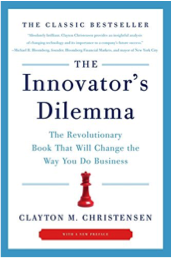 The book clearly outlines many of the incentive traps that incumbent organizations can easily find themselves in, clearly outlining that large organizations don’t fail in innovation because they leaders would be stupid or the organization badly managed, it’s because of the exact opposite. It is the sound and rational management of these organizations that lead them to steer clear of innovation.
The book clearly outlines many of the incentive traps that incumbent organizations can easily find themselves in, clearly outlining that large organizations don’t fail in innovation because they leaders would be stupid or the organization badly managed, it’s because of the exact opposite. It is the sound and rational management of these organizations that lead them to steer clear of innovation.
While the book has received its fair share of criticism, it’s still a truly great primer for anyone looking to understand the issues that plague large organizations when it comes to innovation.
2. Crossing the Chasm by Geoffrey A. Moore
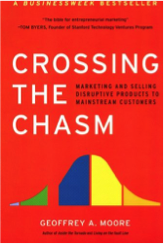
Crossing the Chasm is another classic. First published in 1991, it built on top of the diffusion of innovations theory, popularized by Everett Rogers in the 1960s, explaining why it’s so difficult for disruptive technology innovation to become mainstream.
Referred to as the “bible of entrepreneurial marketing”, the book clearly outlines some of the key challenges that entrepreneurs and organizations face in trying to market and scale their innovation to mainstream markets and does this from a slightly more practical and market-oriented approach than some of the purely strategy-oriented books in the bunch.
3. Playing to Win by A.G. Lafley and Roger L. Martin
Strategy is a crucial part of innovation. Organizations that are able to align their innovation strategy with their overall business strategy (and have a pro-innovation culture which stems from this), have been shown to grow their enterprise value 30% faster.
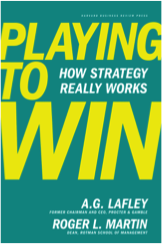 However, most organizations aren’t very good at it. As the authors state: “Strategy is not complex. But it is hard.” They claim this to be the case because creating a strategy forces people to make tough decisions, many of which they intuitively might want to postpone.
However, most organizations aren’t very good at it. As the authors state: “Strategy is not complex. But it is hard.” They claim this to be the case because creating a strategy forces people to make tough decisions, many of which they intuitively might want to postpone.
At the end of the day, strategy is simply about making educated choices and this book shows a highly practical no-fluff approach to doing just that. The simple five step process the book teaches can be used in both startups and large enterprises.
4. 10 Types of Innovation by Larry Keeley
The Ten Types of Innovation is a framework first created by innovation and strategy consultancy Doblin.
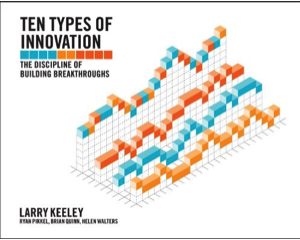 The fundamental idea behind the framework is that traditionally innovation has been seen as simply equating to new product development, which is quite a narrow view of the concept.
The fundamental idea behind the framework is that traditionally innovation has been seen as simply equating to new product development, which is quite a narrow view of the concept.
The framework can serve as a useful and practical way for identifying new sources of innovation, for example by looking at the configuration, offering and experience of both the products and services of an enterprise, as well as the enterprise itself and the book serves as a great primer for thinking about innovation from a broader point-of-view.
5. Blue Ocean Strategy by W. Chan Kim and Renée Mauborgne
Blue Ocean Strategy is a theory created by INSEAD business school professors Kim and Mauborgne.
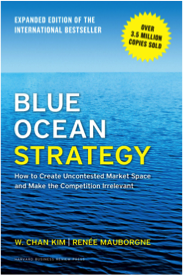 After studying 150 successful strategic moves spanning a century and across industries, they came up with the theory that provides the name for the book. The core idea is that, according to the theory, the most successful companies are able to create new markets for themselves, which are referred to as “uncontested blue oceans”, rendering them invulnerable to the bloody competition that turns existing markets (oceans) “red”.
After studying 150 successful strategic moves spanning a century and across industries, they came up with the theory that provides the name for the book. The core idea is that, according to the theory, the most successful companies are able to create new markets for themselves, which are referred to as “uncontested blue oceans”, rendering them invulnerable to the bloody competition that turns existing markets (oceans) “red”.
It’s one of the most popular business books of the last couple of decades and should be mandatory reading for that alone, but it also serves as a great introduction to value innovation, one of the key concepts behind the theory.
6. What Customers Want by Anthony Ulwick
Outcome Driven Innovation (ODI) process and the “Jobs-to-be-Done” theory are popular and, and at least according to the stats provided by the author’s consulting firm Strategyn, effective methods to “win at innovation”.
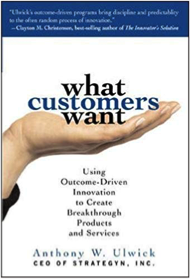 The idea behind them is that the customer really wants a job to be done, instead of the product that you might have for offer. It’s a ½” hole in the wall you want, not a ½” drill, quite simple really.
The idea behind them is that the customer really wants a job to be done, instead of the product that you might have for offer. It’s a ½” hole in the wall you want, not a ½” drill, quite simple really.
Approaching innovation from this point-of-view and following it up with a systematic process allows companies to pinpoint market opportunities with more precision and to also be more likely to succeed in create value-adding innovations to serve those needs and this book provides a number of interesting cases for exploring these methods.
7. The Lean Startup by Eric Ries
Often referred to as “The Book” in startup circles, this book explains the principles by which most modern startups swear by. If you go to Silicon Valley, you might be hard pressed to find a person who hasn’t read the book.
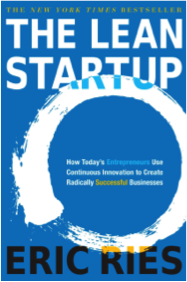 The Lean Startup theory approaches innovation from the point-of-view of their customer’s needs, very much the same way ODI and Jobs-to-be-Done do, albeit with a different take.
The Lean Startup theory approaches innovation from the point-of-view of their customer’s needs, very much the same way ODI and Jobs-to-be-Done do, albeit with a different take.
In the Lean Startup, it’s absolutely crucial to get to the market with a product that actually creates value as soon as possible and with as few resources as possible, with the way to doing this is to rapidly iterate the concept and value proposition based on the feedback of early customers by building Minimum Viable Products or “MVPs” instead of “full-blown, feature-complete” products.
The argument is that this approach provides the startups with a unique competitive advantage over the incumbents and also dramatically de-risks the traditionally long and expensive product development processes.
8. The Hard Thing About Hard Things by Ben Horowitz
As any entrepreneur or innovation likely knows, the path to success is never easy and usually not straightforward either. There are always many mistakes and major difficulties along the way, enough to make most people quit.
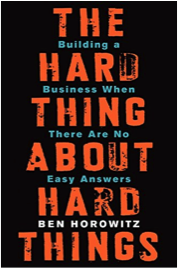 It’s these challenges that Ben Horowitz very candidly talks about in this book that shares his story through life and through being the Founder and CEO of a successful company.
It’s these challenges that Ben Horowitz very candidly talks about in this book that shares his story through life and through being the Founder and CEO of a successful company.
You don’t have to be an entrepreneur or CEO to appreciate these difficulties related to managing our own psychology. We all face them in our work, but especially when we’re looking to create something new.
As it’s our own mind that’s our biggest enemy for achieving our goals, this book serves as a great primer for preparing you for the bumpy road ahead.
9. Creativity, Inc. by Ed Catmull
You often hear that management and creativity can never co-exist. This simply isn’t true and the story of Pixar, as told by its founder Ed Catmull, clearly showcases.
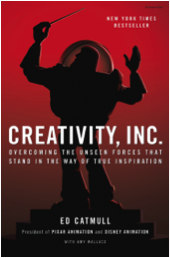 When many organizations seem to simply rely on a few creative geniuses for creating their works, Pixar managed to keep on creating incredible creative work for two decades while growing and expanding as an organization.
When many organizations seem to simply rely on a few creative geniuses for creating their works, Pixar managed to keep on creating incredible creative work for two decades while growing and expanding as an organization.
Catmull shares the principles he believes to have helped the company achieve these results in the book, combined together with great stories from along the way which serves as very illustrative practical examples.
As creativity is a key part of being able to innovate, this is highly recommended for anyone looking to create a thriving culture of innovation.
10. Originals by Adam Grant
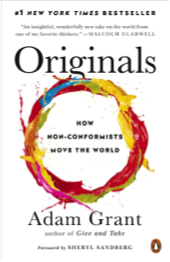
For anyone looking to create a culture that fosters innovation, this book is highly recommended. Adam Grant is a professor of organizational psychology at Wharton and this book shares the results of a number of academic studies, but also very illustrative real-world examples in a highly entertaining format.
The main premise of the book is that it’s the non-conformists, who think differently, that actually change the world, then goes on to provide a great deal of context on who these people are, what you can do to progress your own ideas, and finally, to create an organization where original thinking is encouraged.
11. Good to Great by Jim Collins
While not specifically focusing on innovation, Good to Great is a brilliant book on how to create an organization that is able to sustain high-level performance for sustained periods of time, which is what it takes for innovations to actually become success stories.
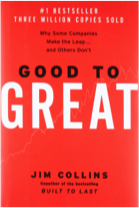 While being focused on high-level topics, such as leadership, culture, strategy, and management, the book also manages to be quite practical and shares plenty of illustrative examples to back up the arguments being made by the author.
While being focused on high-level topics, such as leadership, culture, strategy, and management, the book also manages to be quite practical and shares plenty of illustrative examples to back up the arguments being made by the author.
The seven characteristics that define the “Great companies” the book talks about are easy enough to believe but can be tough to achieve in practice.
12. Start with Why by Simon Sinek
Simon Sinek starts the book with the two main ways to influence others: manipulation and inspiration. He argues that in addition to simply being nicer, the latter is also the more sustainable and effective of the two.
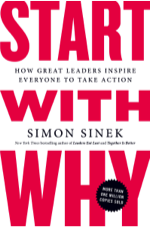 The way to achieve that is to, as the title suggests, start with “why” as opposed to the how or the what. While easy enough in principle, it’s also easy to forget this when we’re in the trenches and working hard to make our innovations happen.
The way to achieve that is to, as the title suggests, start with “why” as opposed to the how or the what. While easy enough in principle, it’s also easy to forget this when we’re in the trenches and working hard to make our innovations happen.
This book serves as a great reminder for the importance of starting with, and especially on communicating “the why” for anyone and everyone involved.
13. Extreme Ownership by Jocko Willink and Leif Babin
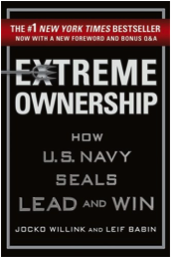 While military-style leadership, especially when brought into the business world, is certainly one of the topics that divide a lot of people, Jocko Willink and Leif Babin do a great job of sharing the principles that U.S. Navy Seals use to build truly high-performance teams.
While military-style leadership, especially when brought into the business world, is certainly one of the topics that divide a lot of people, Jocko Willink and Leif Babin do a great job of sharing the principles that U.S. Navy Seals use to build truly high-performance teams.
Especially the first few chapters are brilliant for anyone looking to build an organization that is truly committed to excellence and on achieving their goals together as a team.
The book serves as a great reminder for any leader that their mindset and the mindsets they cultivate with those around them are what constitutes long-term success.
14. Team of Teams by General Stanley McChrystal
Continuing the list of military-based leadership books, Team of Teams has become an instant classic in leadership literature.
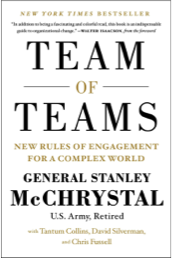 The challenges of traditional hierarchical organizations to adapt to change have become very apparent with the fast-moving and complex world of today. In the case of the US Army, the terrorists were outpacing them. With large organizations, it’s the smaller and nimbler organizations and startups that are, in some cases, running circles around them.
The challenges of traditional hierarchical organizations to adapt to change have become very apparent with the fast-moving and complex world of today. In the case of the US Army, the terrorists were outpacing them. With large organizations, it’s the smaller and nimbler organizations and startups that are, in some cases, running circles around them.
To combat these situations, the only solution for many organizations is to fundamentally rethink the way they’re structured and the way they operate. The book serves as a great introduction to the topic of modern organizations and should provide you with plenty of ideas on how to build a fast-moving and adaptable organization that is able to thrive both now and in the future.
Bonus: Masters of Scale podcast by Reid Hoffman
Finally, as a bonus, I’d very much suggest you listen to the Masters of Scale podcast hosted by Reid Hoffman (Co-founder of LinkedIn) and featuring some of the best known and smartest entrepreneurs and leaders from Silicon Valley, such as Mark Zuckerberg, Eric Schmidt and Reed Hastings.
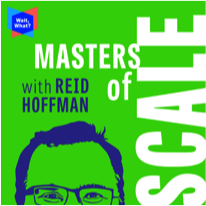 In the show, he shares his thoughts, and those of his guests, along with the related in-depth discussions of the lessons they’ve learned in running and scaling some of the fastest growing and most successful companies in recent history. It’s simply a brilliant and exciting way to learn from some of the best in the world.
In the show, he shares his thoughts, and those of his guests, along with the related in-depth discussions of the lessons they’ve learned in running and scaling some of the fastest growing and most successful companies in recent history. It’s simply a brilliant and exciting way to learn from some of the best in the world.
If you’re looking to create an innovative and rapidly growing organization, there’s hardly a better way you could spend your time than listening to this podcast.
I sincerely hope you’ll find all of these resources useful, best of luck with your journey as an innovator!
About the author:
Jesse is the Co-founder & chairman at Viima, the best way to collect and develop ideas. He’s passionate about helping organizations innovate better and frequently writes on these topics in Viima’s blog.
Follow Us